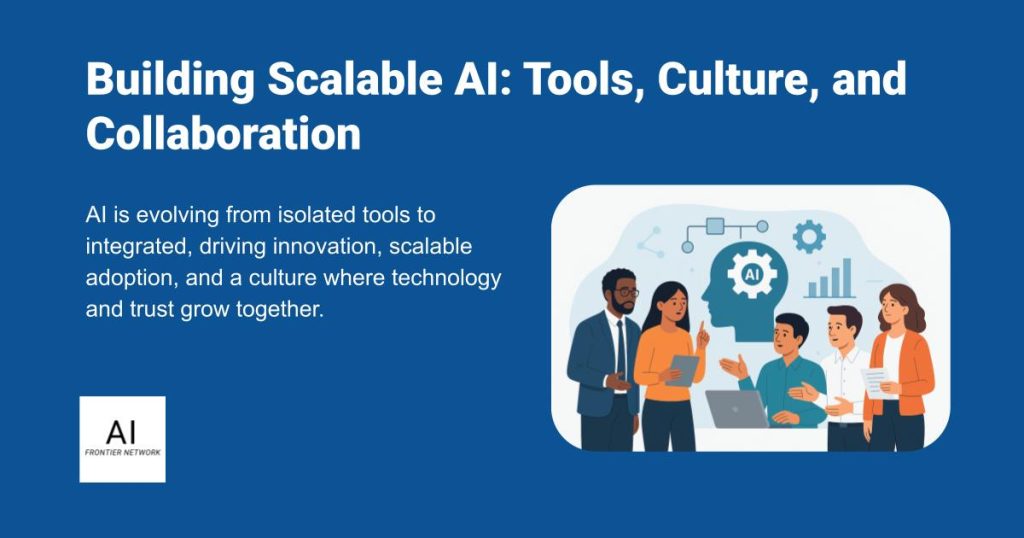
As AI adoption accelerates across industries, the conversation has moved far beyond performance metrics like speed and accuracy. Leaders and practitioners alike now emphasize ethical alignment, explainability, and sustainable integration. Across tools, teams, and sectors, one message is clear: AI’s long-term success hinges as much on people and processes as it does on technology.
Prashant Kondle reminds us that in regulated environments, choosing an AI tool is not just about what it can do; it’s about how it does it. “Explainability, reliability, and conformance to standards” are foundational. In sectors governed by frameworks like HIPAA or CMMC, tools that can’t meet governance or privacy requirements “quickly become a liability.”
Dmytro Verner points out an often-overlooked challenge in tool selection: “The selection of tools becomes challenging because vendors do not provide interoperability standards, which forces enterprises to remain within inflexible ecosystems. Organizations reach enduring success by choosing tools that use APIs as their foundation and operate in cloud environments. Organizations that treat AI deployment as an ongoing lifecycle process instead of a one-time implementation achieve better growth results.”
Samarth Wadhwa echoes this view, emphasizing that tool selection must be integrated. “The biggest challenge I see is not just picking a tool, but ensuring it integrates well with existing workflows and evolves with the business.” Tools must align with compliance and change management from day one to be scalable and effective.
No-Code/Low-Code Platforms: Accessible, But Not Effortless
With tools like Microsoft Power Platform and Salesforce Einstein, Hemant Soni has seen success in empowering non-technical users—but cautions against underestimating the complexity. “Integration complexity remains problematic. Tools don’t play well with existing systems. Feature overlap creates confusion, ROI puzzles executives, and skill gaps make evaluation difficult.” His advice? Start with small pilots, embrace modular design, and invest in training.
Samarth Wadhwa supports the no-code trend but underlines the importance of guardrails: “Effectiveness and ethics in low-code AI require transparency in model training, built-in protections, and human-in-the-loop design.” These platforms offer speed, but must be deployed responsibly.
Human-AI Collaboration: Amplifying Strengths
“Magic happens when workflows leverage each party’s strengths,” says Hemant Soni. “AI processes vast data while humans provide context, creativity, and ethical judgment.” Whether it’s a customer experience workflow or a real-time telecom optimization engine, success depends on a thoughtful division of labor.
Esperanza Arellano expands on this collaboration dynamic: “Tools that support this collaboration often include APIs, chat interfaces, and feedback mechanisms that allow users to guide AI outputs. Reinforcement learning with human feedback (RLHF) plays a crucial role here, allowing AI models to improve iteratively based on real-time human input. Ongoing collaboration ensures AI tools not only become more accurate but also align more closely with human goals, values, and contextual needs. Processes like continuous learning, feedback loops, and explainability mechanisms are vital to this interaction.”
Samarth Wadhwa sees promise in assistive tools like Notion AI and Copilot that enhance, not replace, human decisions. “Successful collaboration stems from tools that are context-aware and support human judgment.”
Culture as the True Enabler
No matter the tool, Prashant Kondle believes culture is the real driver of scalable AI. “I’ve seen organizations fail despite using state-of-the-art tech because they didn’t invest in change management.” Sustainable AI adoption comes from training, empowerment, and continuous learning. “A tool is only transformative if the people using it are supported to grow alongside it.”
While enterprise-grade platforms often dominate the spotlight, several contributors have uncovered lesser-known tools that are quietly driving meaningful impact in their workflows.
For instance, Ganesh Kumar Suresh regularly turns to Google Notebook when diving into dense PDFs on machine learning and data science. Its intuitive mind mapping capabilities help him break down and contextualize complex topics, a sentiment echoed by Naomi Latini Wolfe, who also uses the tool to design AI-driven learning frameworks for her workshops.
Naomi also brought attention to Napkin AI, describing it as a “hidden gem” for educators and facilitators. It’s a simple text-to-visual interface that allows users to create flowcharts, infographics, and curriculum maps without any design expertise. With recent features like Elastic Designs, it’s quickly become one of her go-to resources for sparking discussion and visualizing ideas.
On the development side, Hina Gandhi highlighted the power of Cursor, especially for debugging in large codebases. Unlike GitHub Copilot, which often requires manual codebase searches, Cursor can pinpoint function usage and connect it to relevant stack traces, saving hours during deep technical dives.
Adding to the developer toolkit, Purusoth Mahendran recommends a streamlined stack: V0 by Vercel for quickly building full-stack demos, Cursor for robust development workflows, and NotebookLM to organize thoughts and create structured mind maps, all of which help move from idea to execution at speed.
Conclusion: Building AI with Impact
The contributors here represent a wide spectrum, from enterprise strategists and developers to educators and environmental technologists. But they all agree: AI success depends on responsible tool selection, cultural readiness, and human-centered design. Whether through mind maps, no-code pilots, or debugging tools, the future lies not in choosing “the best AI,” but in building systems that empower people, integrate ethically, and scale sustainably.


